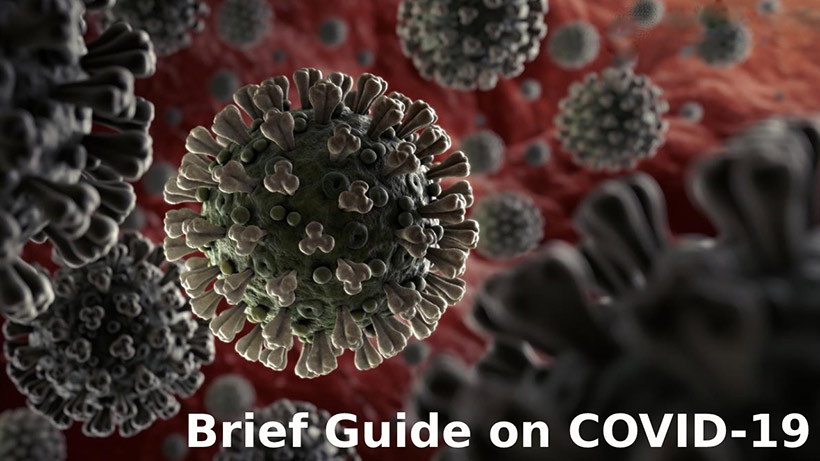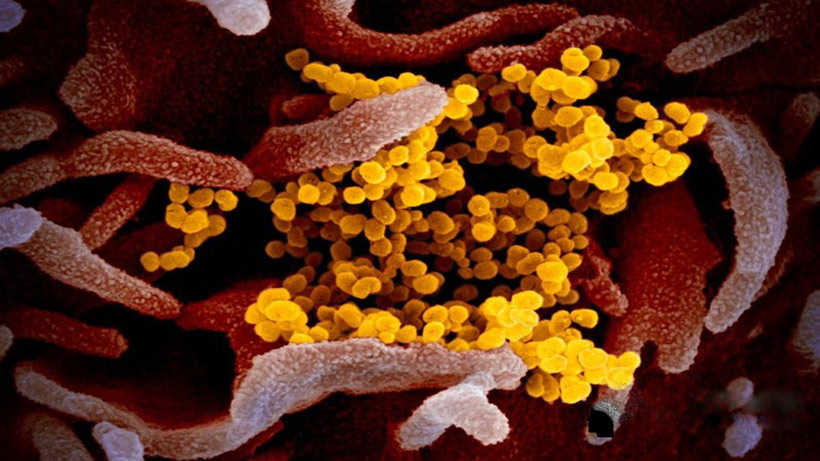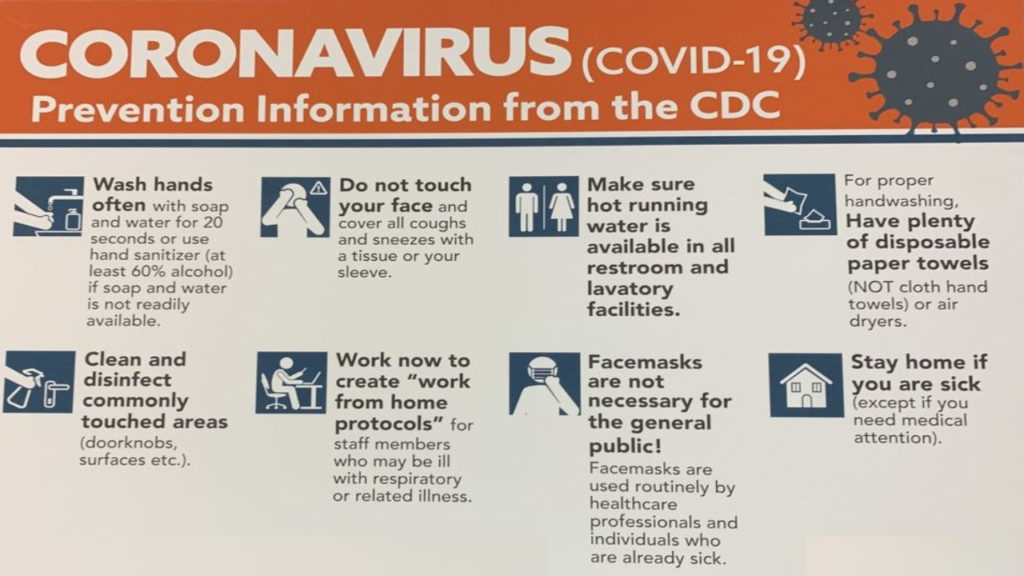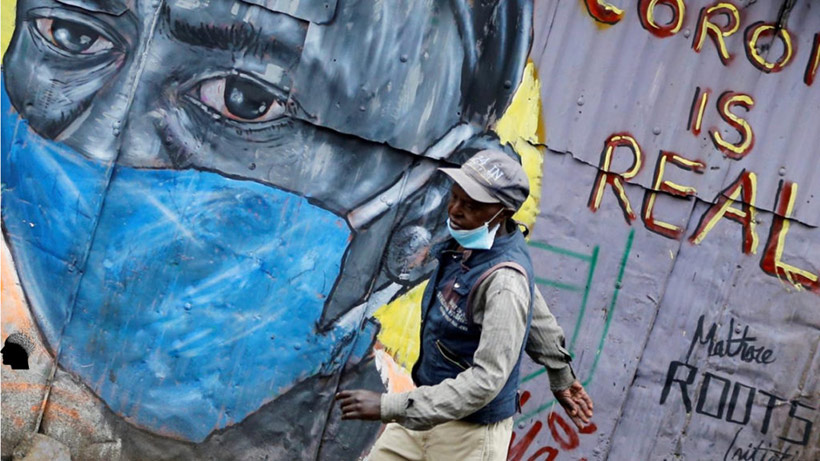
A Brief Guide on COVID-19
Overview
The novel coronavirus or SARS-CoV-2 is responsible for causing COVID-19 (coronavirus disease, 2019). It is a new strain of the virus that belongs to the coronavirus family of viruses. These viruses are responsible for sudden acute respiratory syndrome (SARS) and Middle Eastern respiratory syndrome (MERS). This virus was not seen in humans before late 2019 when a report of the first case of COVID-19 came from the Wuhan province of China.
After the first cases in China, the outbreak of the virus quickly spread throughout the world. On March 11, 2020, WHO (the World Health Organization) declared the disease a pandemic.
The coronavirus triggers a respiratory tract infection, and it can have adverse effects on the upper and lower respiratory tracts, including problems in the nose, throat, sinuses, lungs, and windpipe. COVID-19 disease mainly spreads through person-to-person contact, and the symptoms of the disease can range from mild to deadly.

Symptoms
The symptoms of COVID-19 do not occur right away. It can take about 2 to 14 days from exposure to the virus for the signs to manifest. The symptoms can also vary from person to person. Some might experience mild symptoms, while others might exhibit severe symptoms of the disease. Some people have tested positive for COVID-19 but do not show any signs.
Some of the COVID-19 symptoms include:
- Cough
- Fever or chills
- Fatigue
- Sore throat
- Shortness of breath
- Difficulty breathing
- Diarrhea
- Muscle or body aches
- Loss of smell or taste
- Nausea
- Vomiting
- Headache
- Congestion or runny nose
- Confusion
- Bluish lips or face
- Trouble staying awake
- Persistent pressure or pain in the chest
Getting infected with coronavirus can result in respiratory failure, pneumonia, septic shock, or death. Most of the COVID-19 complications are a result of a condition called cytokine storm or cytokine release syndrome. Upon entering the body, the virus triggers the immune system to release many inflammatory proteins known as cytokines into the bloodstream. These proteins can damage the orangs by killing the tissue.
If you or someone you know exhibit the following symptoms, then get medical attention right away:
- Blush face or lips
- Shortness of breath or difficulty breathing
- New confusion
- Continous chest pressure or pain
- Inability to fully wake up
Some people might also experience a stroke; signs of stroke include:
- Face: One side of the face might feel numb or drooping. The smile becomes lopsided.
- Arms: One arm becomes weak or numb. While raising both arms, one will sag.
- Speech: Speak becomes unclear. Trouble repeating sentences.

Prevention
Following simple guidelines can protect you from getting infected with the coronavirus and catching COVID-19.
- Maintain a distance of 3 feet (1 meter) between yourself and others. The virus spreads by the droplets a person ejects when they sneeze or cough, so it is best to keep the distance to avoid getting those droplets in your mouth, eyes, or nose.
- Restrain from touching your mouth, eyes, or nose. You might accidentally touch a surface infected with the virus, and by touching your face, you can quickly transfer that virus from outside to the inside of your body.
- Please wash your hands frequently & thoroughly with soap and water or disinfect them with an alcohol-based sanitizer.
- Don’t go to crowded places. People in crowded areas are more likely to be in close contact, increasing the chances of spreading the virus.
- If you have to go outside, don’t forget to wear a mask.
- If you get a mild fever or cold, stay at home and don’t go to school or work. And if you have to go outside to visit a doctor, wear a mask and don’t use public transport. Also, inform the doctor about your symptoms before visiting.
- Keep up to date with the latest information provided by your local and national health authorities and organizations like WHO and CDC.

Treatments
There is no vaccine or proper treatment available for COVID-19. The research to develop a vaccine is currently underway, and scientists around the globe are working to find a cure for this disease. Several vaccine projects are in different phases of development worldwide, but until there is a vaccine for COVID-19, it is best to take precautions.
After consulting a healthcare professional, those who get mild symptoms can take over-the-counter medication for fever, body aches, or sore throat. According to the National Institute of Health, people with COVID-19 can take non-steroidal anti-inflammatory drugs (NSAIDs) or acetaminophen.
Those who exhibit severe symptoms need proper medical care and should go to a hospital. Many ongoing clinical trials are testing the effectiveness of various existing drugs on the symptoms of COVID-19.
FDA has allowed clinical trials for medications such as tocilizumab, hydroxychloroquine, and chloroquine, which help treat malaria and autoimmune conditions for treating COVID-19.
FDA also approves the clinical trial and hospital use of blood plasma for people who have COVID-19 or those who have recovered to build immunity.
